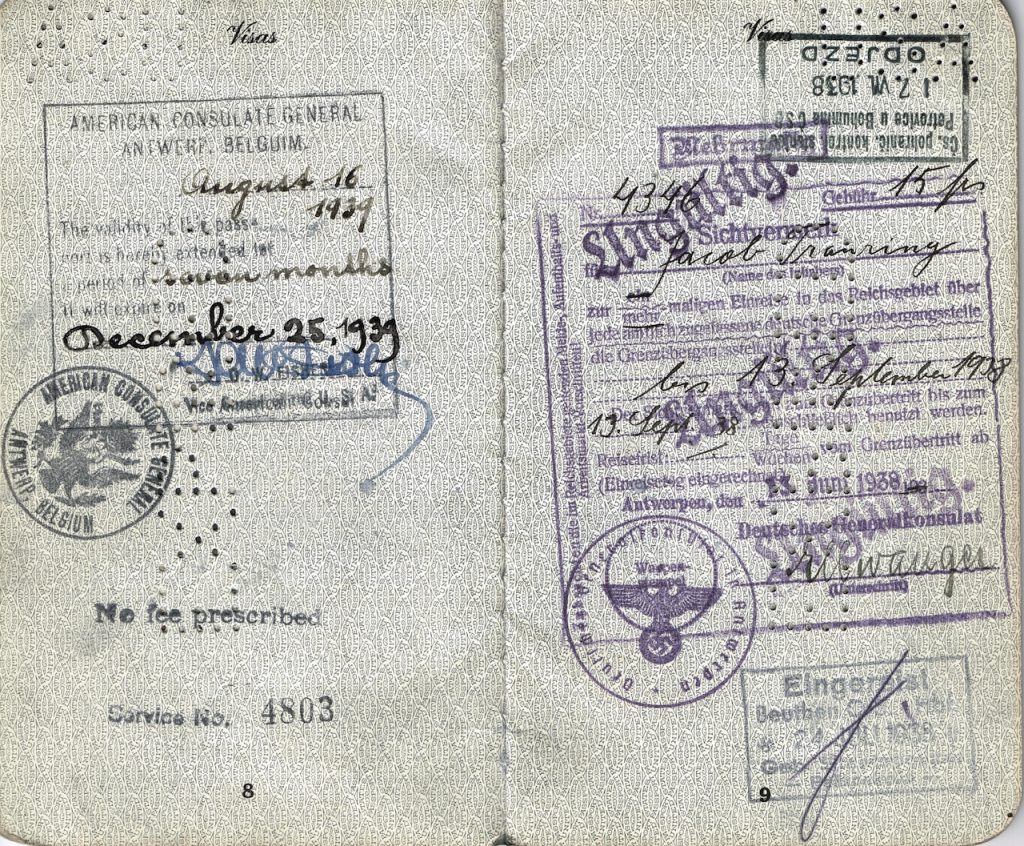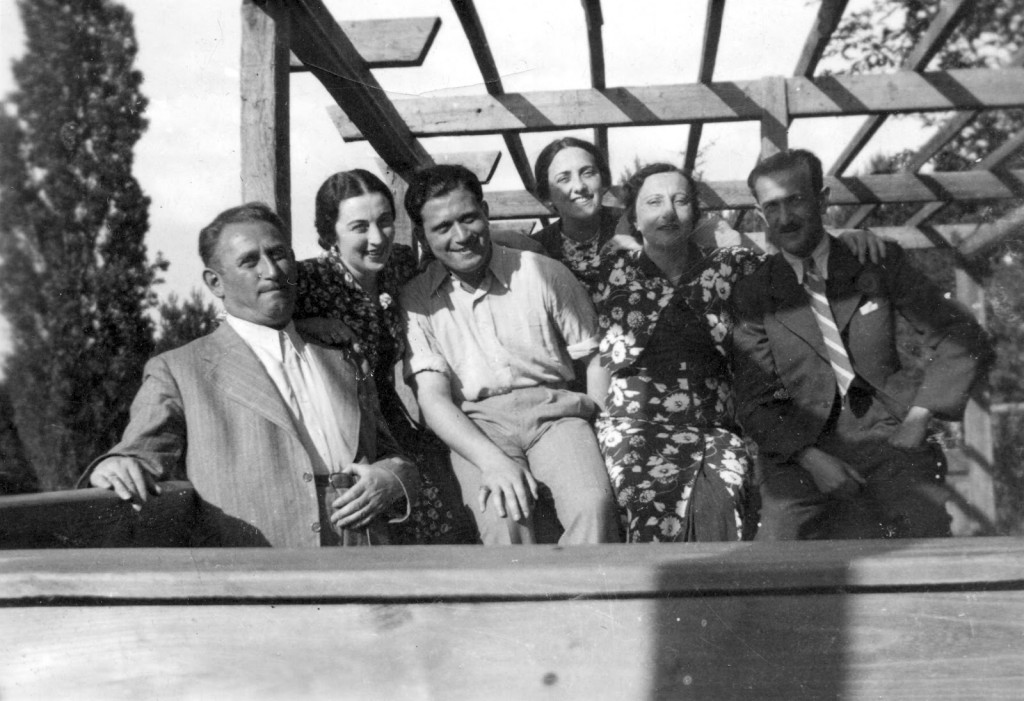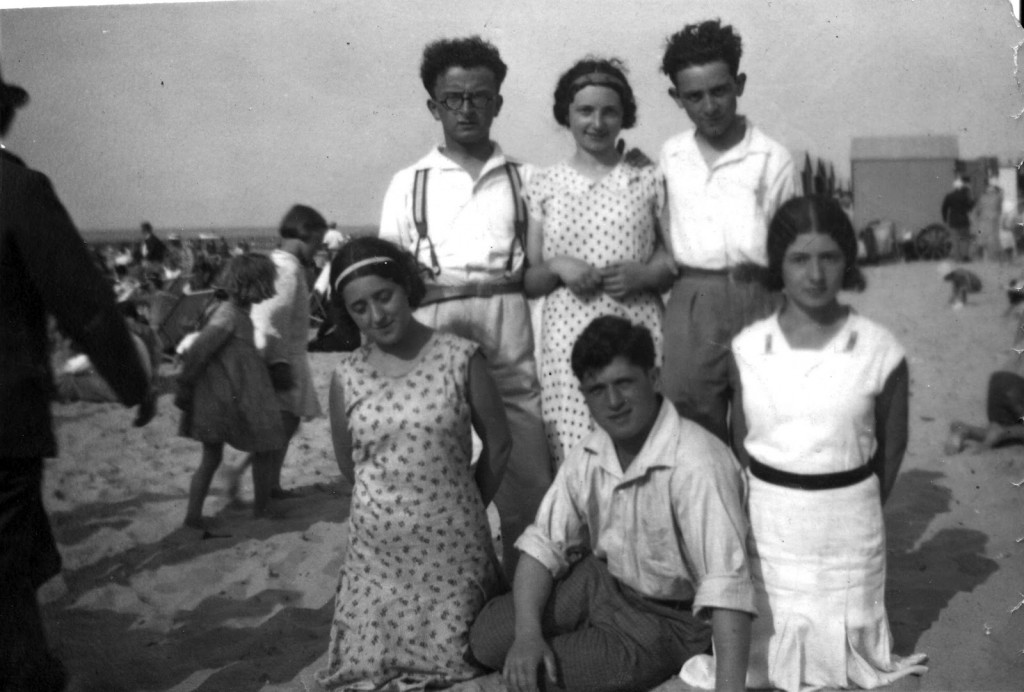I’ve written about my grandfather Jack Trauring a few times before. I wrote Remembering my Grandfather about my thoughts after his death, Friends from Antwerp – and is that a famous Yiddish poet? about his life in Antwerp and photographs of him there, and more recently discussed how his first name changed through various countries in Don’t get stuck inside the box. As today is Holocaust Remembrance Day, I thought I would write a story my grandfather told me about his life in Europe in the run-up to the Holocaust.
My grandfather was born in Vienna, Austria during WWI, after his family was forced to flee their hometown of Rzeszów in the Galicia region of the Austrian Empire. After the war that town would become part of Poland, and his family returned there for the early years of his life. At the age of nine, in 1925, his family moved to Antwerp, where he lived until leaving for the US in 1940. My grandfather’s life in Antwerp wasn’t easy, with his father dying just a few years after they arrived there. With his father gone, my grandfather took over his father’s watch store near the docks of Antwerp at the age of just fourteen.
Although my grandfather was born in Austria, and had subsequently up until 1940 only lived in Poland and Belgium, he had something that almost certainly saved his life (and the lives of others, see below), a US Passport. His US citizenship came from the fact that his father had been born in New York. In 1884, my grandfather’s grandfather, Isaac Trauring, moved with his family to the United States. At the time he had one daughter, Kreindel Blime (Katey), who was born in Rzeszów. In New York he had three more children, Frances, Morris, and Joseph, and later another child back in Rzeszów, Arno. My grandfather’s father was Morris, and his birth in New York in 1887, provided him and his children US citizenship. It’s not clear if Morris lived in NY past 1897, when his brother Arno was born in Rzeszów, but I do know that he applied for a US passport in the US Embassy in Vienna in both 1910 and 1914. In 1914, his application states that he had been in business in Rzeszów since 1911, and had fled to Vienna after the Russians had invaded. Less than a year after that application, my grandfather would be born in Vienna.
In 1929, when my great-grandfather died, he had apparently still been in touch with the US Consulate in Antwerp, as his widow, my great-grandmother, subsequently received a Report of the Death of an American Citizen from the consulate (although for some reason, this was not issued until almost a year after his death). Up until that point, I don’t know if my grandfather was even aware that he had US citizenship. About a year after his mother received the report from the US Consulate, my grandfather registered with the US Consulate. Look at his photo in the certificate below and realize he’s only 16 years old, and at that point had been running his father’s business for almost two years:

As things got worse in Europe, he applied for a US passport of his own in 1938:

Some years ago I spoke to my grandfather about his experiences in Belgium, and he told me that before the war he traveled to Nazi Germany to try to get his younger cousins out of Germany. My family had many relatives in Germany before the war, especially in Cologne and Wuppertal, and while some of them had been able to flee the country earlier, some had not be so lucky and were now not allowed to leave. Without a country willing to accept them as refugees, it was impossible to leave Germany, and no countries were taking in Jews at that time. My grandfather and his brothers used their US passports to travel into Nazi Germany to try to get their family out.
The reason this was possible is that even though they were Jews, they were US citizens, and at the time Germans had a lot of respect for the United States, and were still trying to get the United States to take their side in the upcoming conflict in Europe, or at least remain neutral. It’s not a secret that many US leaders admired Hitler. Most famously perhaps was the father of President John F. Kennedy, Joseph Kennedy, who at the same time my grandfather was applying for his US passport at the US Consulate in Antwerp, was the US Ambassador in the United Kingdom. It was supposedly a report commissioned by Kennedy, and written up by one of most famous Americans of the time Charles Lindbergh, that influenced Prime Minister Chamberlain not to respond to Germany’s annexation of Czechoslovakia. It was this decision that led to the Munich Agreement in 1938, and the famous Chamberlain statement that they had achieved “peace for our time”.
So with US passport in hand, my grandfather told me that he traveled to Nazi Germany to try to get his cousins out of the country. It didn’t always work, but this is what he did:
He would travel to Germany and pick up his younger cousins. Their parents would travel separately to the border crossing, and wait. My grandfather would travel by train with only the children, telling the border guards that he was taking his cousins on vacation to the beaches in Belgium. If the border guards allowed the children to go with him, he would continue on by train to Belgium. If not, he would hand over the children to their waiting parents at the border.
My grandfather was well into his 90s when he told me this story, and he did not remember which cousins he had ferried across the border. In 1938 he was only 23, so I was asking him about something that had happened at least seventy years earlier. While I would love to find out who those cousins were, and what happened to them subsequently (keep in mind that Germany invaded Belgium in 1940, so getting to Belgium was only a temporary reprieve).
One thing I did find after my grandfather passed away was his passport from 1938. It tells several stories. One of those stories is his entering Nazi Germany, as he described.
In his passport, there are two visas for entry into Nazi Germany. The first one was issued on June 13, 1938 and was good for three months, until September 13 (on the right page):

The second visa was tellingly issued on November 11, 1938, the day after Kristallnacht (which started the night of November 9 and ran into the day of November 10):

With his US passport and these visas, he entered Nazi Germany and tried his best to get his family members to safety. It’s hard to even imagine what he felt at the time. Imagine Kristallnacht just occurred, where Jewish businesses and synagogues were burnt to the ground, and dozens of Jews were murdered. Tens of thousands of Jews were being rounded up and sent to concentration camps. In this environment you get a visa and decide to enter a country that wants you dead. Maybe your US passport will protect you, but really how could you know that?
So almost eighty years ago, my grandfather went into the lion’s den, and saved his family members from the Nazi regime. He would later make it out of Belgium just months before the Nazis invaded, by traveling through France to Italy and then the US. His future wife, who also lived in Antwerp, would leave Belgium literally with German bombs falling around her, make her way to France, and then Morocco and Portugal, before making it the US. That, however, is another story. [In 2021 I added the story of my grandmother: Seven women, and a detour to Morocco.]











